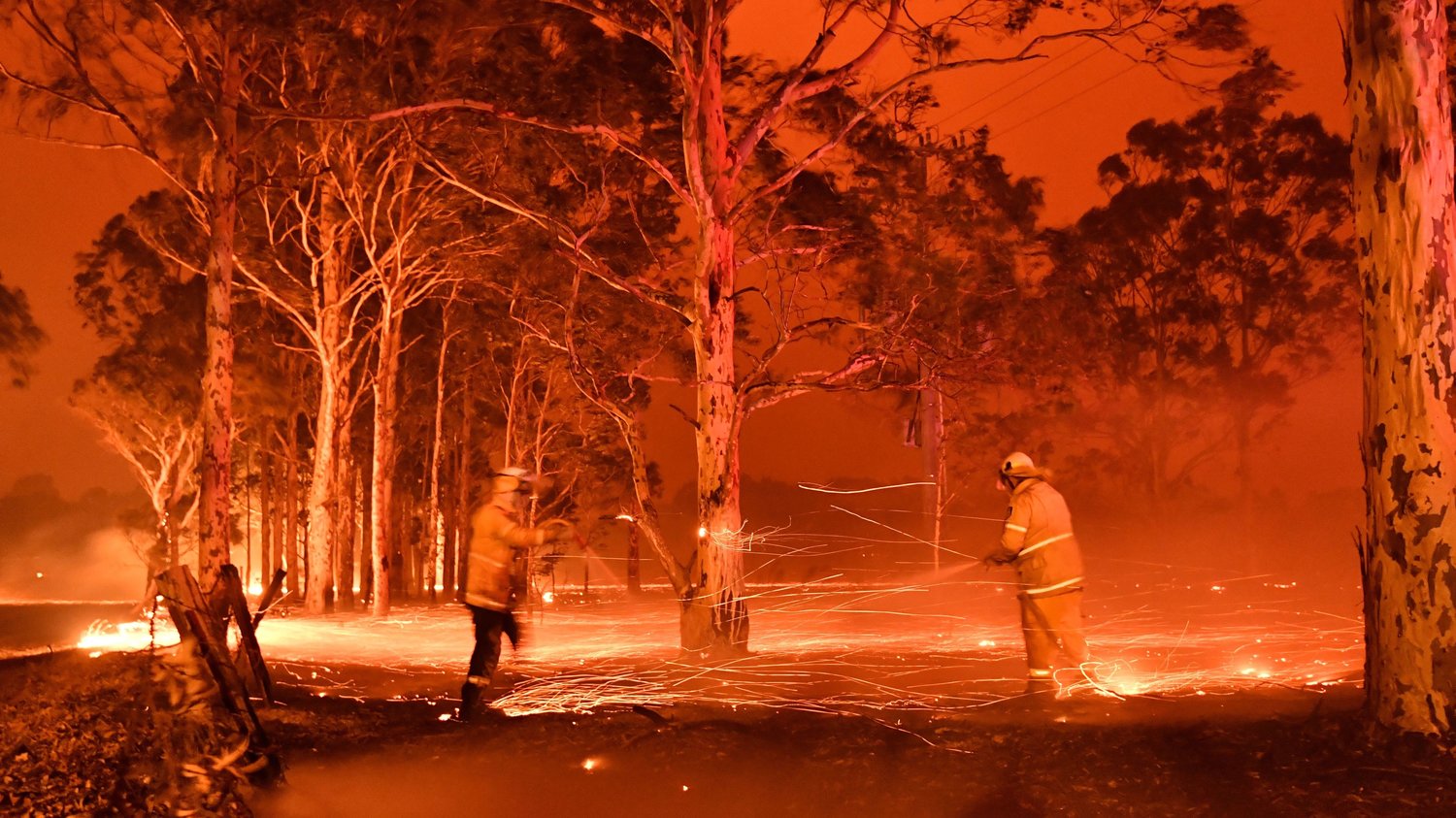As a country burns, Australian Prime Minister Scott Morrison has faced fierce criticism from a public who see no leader in him. Dom Friel takes a close look at his actions and the reactions of those affected.
Australia’s bushfires began early this year in November, two months before midsummer. World media has spread the images of devastation, as at least 18 million hectares of land and 6,000 buildings have turned to ash.
So far, the death toll is 33, and still rising. The smoke has intoxicated major eastern cities and spread further, across the Pacific, to New Zealand and as far as Argentina. The air pollutants have and will damage Australians’ health, and the destruction of forests set in action a damaging climate feedback-loop. The number of animals killed is estimated to be over half a billion, meaning biodiversity may quickly becoming a thing of the past in the country. The reality in Australia has been worse than both science and fiction predicted, yet as large areas of the nation burned, Morrison was missing in action.

In December, the scandal surrounding Morrison reached fever pitch over his decision to holiday in Hawaii during the wildfires. The cover up by his administration, who first denied that Morrison was in Hawaii, served only as an insult to the Australian people. It took the deaths of two volunteer firefighters, Geoffrey Keaton and Andrew O’Dwyer, for the PM to return home. He seemed to expect to receive praise for his return rather than vilification for his absence, remarking, “I don’t hold a hose… I don’t sit in a control room.”
Maybe there’s some merit to that sentiment: what good would Morrison holding a hose do? But this argument ignores his position, his power and his record. Morrison has long been seen to be an ally of a powerful domestic coal lobby. In 2017 he brought a lump of coal to Parliament, preaching: “Do not be afraid… Don’t be scared of it,” in an attempt to trivialise the environmental impacts of fossil fuel use. It cannot be ignored that coal has long propped up Australia’s economy, and whilst the public support greater environmental protection, they paradoxically oppose disinvestment in extractive industry.
The nuance of the internal politics is complicated, but many see the agenda of Morrison’s Liberal Party as clear. In 2013, Morrison was part of the administration who abolished an independent Climate Commission tasked with punctuating public debate with scientific facts. The decision seemed to be an attempt to silence debate, but chief commissioner Professor Flannery refused to be gagged, adding: “As global action on climate change deepens, propaganda aimed a misinforming the public about climate change, and so blunting any action, increases”.
Morrison’s return to Australia was far from ideal. Appearing at a number of devastated villages, locals felt he was disingenuous, flippant, and clearly could not grasp the enormity of the moment. In one village he visited, the Prime Minister was unaware that the fires there had taken the lives of locals. Rural communities have felt that his appearances in their towns are little more than photo ops and chances to be seen to be helping. It has even been hard for him to secure handshakes from locals, embarrassingly seen grabbing the withdrawn arms of unimpressed citizens. Between Christmas and New Year, he made just one public appearance and largely kept his silence, but still managed to find the time to rub shoulders with Australia’s test cricketers.

It took weeks of pressure from the opposition to announce plans to compensate volunteer firefighters, and there has been a general paucity of federal support given to state fire forces – forces which have had budgets cut by their government. A video shared by Morrison looked to praise an initiative to involve the nation’s army in tackling blazes, but it was again received with contempt by the country. An up-beat soundtrack appeared distasteful, and a badly placed donation link in the post which gave funds to his own Liberal Party instead of towards the relief efforts was met with widespread outrage.
The wider public response to their Prime Minister’s failure of leadership has been ridicule. As tourism minister in 2006, Morrison played a part in an advertising campaign bearing the tagline “Where the bloody hell are ya?” and that tagline has been in the minds of people all southern summer. He had previously embraced his nickname ‘ScoMo’ in public but his new alias ‘Scotty from Marketing’ – pushed by satirical news site The Betoota Advocate – had no intentions of flattery.
It’s clear that Scotty from Marketing has become a national laughingstock, perhaps culminating in The Chats improvised song ‘I Hope Scott’s House Burns Down’ which has received over a million views across media platforms.
Morrison has not enjoyed the criticism of him. “There has been a lot of blame being thrown around,” he said. “Blame: it doesn’t help anybody at this time, and over analysis of these things is not a productive exercise.”
These comments seem particularly misjudged. People who lose their livelihoods will look to those whose job it is to lead them. When they see a leader who flees the scene of an ongoing disaster, they are unlikely to forgive.
Image: Saeed Kan (AFP)

